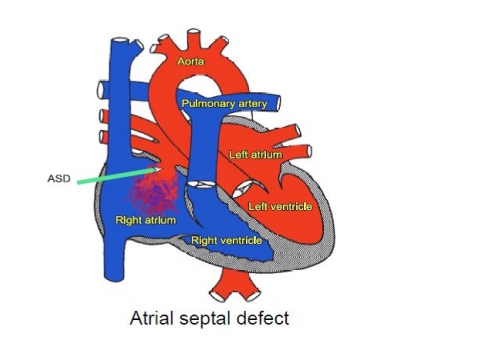Child
- About
- Meet The Team
- Conditions
- Aortic Stenosis
- Atrial Septal Defect
- Coarctation of the Aorta
- Complete Atrioventricular Septal Defect
- Heart Murmur
- Interrupted Aortic Arch
- Normal Heart
- Partial Atrio-Ventricular Septal Defect
- Patent Ductus Arteriosus
- Pulmonary Atresia with Intact Ventricular Septum
- Pulmonary Atresia with Ventricular Septal Defect
- Pulmonary Stenosis
- Right Aortic Arch
- Small Ventricular Septal Defect (Muscular)
- Small Ventricular Septal Defect (Perimembraneous)
- Tetralogy of Fallot
- Transposition of the Great Arteries
- Ventricular Septal Defect (Large)
- Dental Practitioners: Dental care in children at risk of Infective Endocarditis
- Looking after your child’s oral health
- Coming for an echocardiogram
- Outpatient Appointments
- Preparing to Come into Hospital for Surgery
- On Admission to the Children's Ward
- Visiting
- Operation Day
- Children's Intensive Care
- Daily Routine on Intensive Care
- Managing your child's discomfort
- Going Home
- Children's Cardiac MRI Scan
- Cardiac Catheter
- Reveal Device
- Ablation Procedure
- Pacemakers
- INR and Warfarin
- Lifestyle and Exercise Advice
- School Advice
- Attachment
- Yorkshire Regional Genetic Service
- Advice & Support Groups
- Your Views
- Monitoring of Results
- Second Opinion
Atrial Septal Defect
An atrial septal defect (ASD) is a hole between the two small chambers of the heart. It allows blood from the left sided chamber to pass to the right sided chamber. This results in the right side of the heart being overloaded with blood and also results in the lungs becoming congested because they receive an excessive amount of blood.
Such defects cause only mild symptoms in young children (such as breathlessness on exertion), but if an ASD is left untreated over a period of many years it eventually leads to permanent damage to the heart and sometimes to the lungs as well. This may prove fatal when the patient reaches later adult life, so it is very important that an ASD is treated when the patient is young and before the heart or lungs have been
permanently damaged.


Test
An ultrasound scan of the heart (an “echocardiogram”) is required to make the diagnosis
Treatment
There are 2 types of treatment, surgery or keyhole, to close an ASD. This depends on the size and where the hole is situated.
Surgical treatment for ASD
This involves opening the patient’s chest and taking over the function of the heart and the lungs with a machine whilst the heart is stopped and opened to allow the surgeon to repair the hole. There is a scar on the front of the chest after the operation. Operations to close ASDs are usually straightforward although there is a very small risk (about 1 in 300) of dying at surgery. There is also a very small risk with heart operations that blood clots or pockets of air might form in the heart; these may very rarely be serious enough to cause brain damage. There are other minor risks involved, such as fluid collecting around the lungs or the heart after surgery, but these are very rarely serious. The operation takes about 2-3 hours, a short stay in intensive care and being in hospital about 5 days. Most children are completely back to normal activities within 6 weeks after the operation.
“Keyhole” treatment for ASD
A keyhole device can be used to close an ASD without opening the chest. It is made of a mixture of very fine wire and synthetic cloth (Dacron). It is delivered to the heart folded up inside a long thin tube (catheter) which is inserted into the vein in the groin under general anaesthetic.
Once in the correct position, the device is unfolded by pushing it out of the catheter. It is held inside the ASD by its “button” shape and once its position is satisfactory it is released and stays inside the heart, permanently blocking the hole. The device stays inside the heart and becomes covered over by the patients’ own tissue during the healing process.
Potential advantages of this type of treatment are that it can avoid the discomfort of an operation, can avoid a scar on the chest, and avoid some of the complications of surgery such as fluid collecting in the chest, and can shorten hospital stay to only one or two nights in hospital.
Potential risks of the keyhole procedure include:
The device not staying in place after insertion (this may require an operation to retrieve the device and close the hole at the same time); a residual hole might be left, and if large this might need surgical treatment; clot around the device; and infection. Of all these risks, blood clots are the most serious as there is a chance they might cause a stroke (brain damage) or even cause death. The risk of stroke is very small- probably around 1 in 400 cases and the risk of death is even smaller, probably around 1 in several thousand cases. These small risks of treatment have to be balanced against the risk to the patient’s life if the ASD is left untreated.
General advice for the future
Most patients will remain completely well and lead a completely normal life after treatment to close an ASD. No restrictions to physical activity are recommended and no special precautions are necessary. Patients may even be discharged from the clinic after a few years if there are no concerns following the procedure.
Updated Feb 2021 by the Paediatric Cardiology Team
